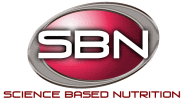A classic study published in Alternative Medicine: The Definitive Guide (Tiburon, CA: Future Medicine Publishing, 1995), in which a team of researchers tested 3 chemicals on a group of rats, applying one at a time; no ill effects were observed. When they combined and administered 2 at a time, a decline in health was noted and when 3 chemical were given at once, the rats died within 2 weeks. Cancer cells develop because of damage to DNA. DNA is in every cell and directs all the cell’s activities. When DNA becomes damaged it is often able to repair itself. In cancer cells, the damage is not repaired. Every person is different…the risk of developing cancer depends on many factors, such as the length and intensity of exposure to a carcinogen, the person’s overall health, and the person’s family history. Whether studying, diagnosing or treating cancer, one must not neglect the “environmental” component to this multi-factoral disease. The following is a check list one should be aware of and their potential to adversely affect ones health.
Electromagnetic field exposure | Ionizing radiation | Nuclear radiation | Pesticide/herbicide | Polluted water | Chlorinated water | Bisphenol A | Radon | Tetrachlorethylene | Cadmium | Fluoridated water | Hormone therapies | Immune-suppressive drugs | Irradiated foods | Food additives | Vaccinations | Bacteria, Virus’, Parasites | Arsenic | Lead | MTBE (methyl tertiary-butyl ether) / gasoline additive | Tobacco, Smoking (including second hand smoke) | Microwaved foods | Antibiotics and drugs | Mercury | Chronic Stress | Diesel Exhaust | Aluminum | Formaldehyde | Parabens
With the world of the modern internet, you can search and study these toxic elements for yourself. Cleaning up your diet many times is not enough. One must test to determine:
#1 Are you being unwittingly exposed to toxic elements?
#2 Is your body excreting those toxic elements properly?
There’s no question that reducing your exposure to these toxic elements will go far in the realm of prevention but you can go a step further. Certain blood tests may aid in making a cancer diagnosis, monitor treatment, or monitor effects of the cancer on the body. Keeping those tests within normal range may not mean you won’t get cancer but you can optimize your chances of prevention and survival by keeping them in normal range. There are numerous tests that could be discussed but the tests displayed on the next page can be used to determine the health of your immune system, find infection and inflammation that could be ravaging your system and other ominous signs to be aware of.
Certain blood tests may aid in making a cancer diagnosis, monitor treatment, or monitor effects of the cancer on the body.
Keeping these test values within normal range may not mean you won’t get cancer but you can optimize your chances of prevention by keeping them in range.
ESR: Erythrocyte Sed Rate
Clinical Range: 0.00-20.00 mm/HR
Healthy Range: 0.00-6.00 mm/HR
Measures inflammatory process.
Never diagnostic of a specific disease. Changes are more significant than a single abnormal occurrence.
CK: Creatine Kinase
Clinical Range: 24-173 u/l
Healthy Range: 64-133 u/l
High levels indicate tissue breakdown.
Cancer: Prostate, breast, ovary, colon, small cell carcinoma of lung
CRP: C-Reactive Protein
Clincal Range: 0.00-4.90 mg/L
Healthy Range: 0.00 – 1.50 mg/L
High levels indicate nonspecific tissue injury & inflammation, begins in 4-6 hours, more intense increase rise than ESR.
Very useful in monitoring response to treatment.
May be a useful tumor marker since a high CRP is often present when CEA and other tumor markers are not increased.
Alkaline Phosphatase
Clinical Range: 25-150 IU/L (adults 20-59)
Healthy Range: 40-120 IU/L (adults 20-59)
As a tumor marker, only three laboratory markers were consistently abnormal, in screening for metastatic carcinoma of breast, prior to clinical detectability of metastases – alkaline phosphatase, GGT and CEA (carcinoembryonic antigen).
Ferritin
Clinical Range: 22-322 ng/ml
Healthy Range: 30-218 ng/ml
Malignancies: poor prognosis with increased ferritin.
Malignant lymphoma
In the absence of cancer, can indicate iron overload.
GGT: Gamma Glutamyltransferase
Clinical Range: 6-65 mu/mL
Healthy Range: 22-39 mu/mL
Increased levels associated with increased risk for cancer
High levels may also be associated with liver disease, alcoholism, and gall bladder disease.
WBC
Clincal Range: 4.00-10.50 k/cumm
Healthy Range: 5.00-8.00 k/cumm
High levels can indicate cancer, leukemias, infection and chronic inflammation.
Low levels indicate a compromised immune system.
Neutrophils
Clinical Range: 40-74%
Healthy Range: 55-65%
Bacterial and viral infections, cancer and many other conditions will most commonly elevate neutrophils initially, with more severe problems or infections the neutrophils stores and productive capacity of bone marrow may be incapable of keeping up with demand. This may result in lowering levels of neutropenia. This may be an ominous sign.
LDH: Lactate Dehydrogenase
Clinical Range: 100-250 mu/mL
Healthy Range: 120-160 mu/mL
High levels indicate cell destruction.
Albumin
Clinical Range 3.6-4.8 gm/dL
Healthy Range: 4.10-4.50 gm/dL
Panic range: < 2.0 gm/dL
Albumin is a simple protein with many uses widely distributed throughout the body. It’s important in nutrient transport and waste removal. There is an INCREASED MORTALITY RISK with a low albumin. Albumin <3.5 with a 1500 or less absolute lymphocyte count is an ominous sign.
Globulin
Clinical Range: 1.50-4.50 gm/dL
Healthy Range: 2.81-3.51 gm/dL
Low values indicate a low immune system.
Uric Acid
Clinical Range: 2.40-8.20 mg/dL
Healthy Range: 4.10-6.00 mg/dL
High levels typically associated with gout.
High levels can be associated with multiple myelomas, lymphomas, leukemias and chronic inflammation.
